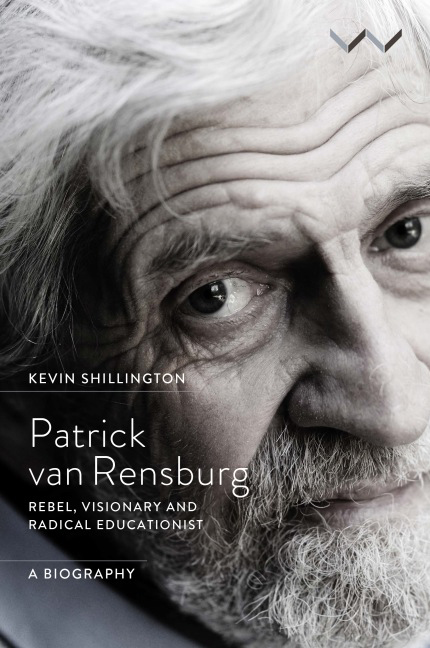Book contents
- Frontmatter
- Dedication
- Contents
- Acknowledgements
- Abbreviations and Acronyms
- List of Illustrations
- Maps
- Introduction
- 1 Origins and Identity in South Africa
- 2 An Anglophone South African, 1936–1948
- 3 The Making of an Afrikaner, 1949–1953
- 4 Diplomat and Rebel, 1953–1957
- 5 Anti-Apartheid Activist, 1957–1959
- 6 Boycott, 1959–1960
- 7 Into Exile, 1960–1961
- 8 Return to Africa, 1961–1962
- 9 The Founding of Swaneng Hill School, 1962–1963
- 10 Challenging ‘The Ladder to Privilege’, 1963–1965
- 11 The Alternative Educationist, 1965–1967
- 12 Expansion and Replication, 1967–1969
- 13 Time of Crisis, 1969–1971
- 14 Education with Production, the 1970s
- 15 Foundation for Education with Production and Spreading the Word, the 1980s
- 16 Education with Production and South Africa, the 1990s
- 17 Return to Botswana
- Epilogue
- Notes
- Bibliography
- Index
13 - Time of Crisis, 1969–1971
Published online by Cambridge University Press: 10 September 2020
- Frontmatter
- Dedication
- Contents
- Acknowledgements
- Abbreviations and Acronyms
- List of Illustrations
- Maps
- Introduction
- 1 Origins and Identity in South Africa
- 2 An Anglophone South African, 1936–1948
- 3 The Making of an Afrikaner, 1949–1953
- 4 Diplomat and Rebel, 1953–1957
- 5 Anti-Apartheid Activist, 1957–1959
- 6 Boycott, 1959–1960
- 7 Into Exile, 1960–1961
- 8 Return to Africa, 1961–1962
- 9 The Founding of Swaneng Hill School, 1962–1963
- 10 Challenging ‘The Ladder to Privilege’, 1963–1965
- 11 The Alternative Educationist, 1965–1967
- 12 Expansion and Replication, 1967–1969
- 13 Time of Crisis, 1969–1971
- 14 Education with Production, the 1970s
- 15 Foundation for Education with Production and Spreading the Word, the 1980s
- 16 Education with Production and South Africa, the 1990s
- 17 Return to Botswana
- Epilogue
- Notes
- Bibliography
- Index
Summary
By 1969 Swaneng was a large, thriving community, with Patrick van Rensburg respected as, in effect, a new kgosana, or sub-chief, with his own ‘ward’ within Serowe. In the course of 1969, however, it became apparent that, as principal, he was not coping with his myriad responsibilities.
This could partly be attributed to the sheer size of the school, now nearing 400 students. There were several schools in the country of this size, but Swaneng Hill claimed to be different and was increasingly recognised as such. A school like this, with all its innovation, imaginative teaching, and practical community and voluntary work – the very essence of ‘the spirit of Swaneng’ – required Patrick's constant energy and attention.
It called on every ounce of his charisma to inspire new young volunteer teachers and the whole student body. This dependence on Patrick was highlighted by Carl Gunnar Marstrand, the Danida volunteer at the Farmers’ Brigade, who observed that the expatriates at the school and the brigades ‘[were all] alight with idealism … Yet, without a stout and dynamic personality as PvR to co-ordinate and find direction for our efforts, rather little would have come of our idealism in terms of creating any durable effects.’
By 1969, however, Patrick was seldom in direct touch with the students, and many of them were becoming increasingly sceptical about doing their own catering and giving up their Saturday mornings for manual and community work when they had ‘more important’ revision for exams to do.
That October Patrick sought the advice of several of his most trusted members of staff: Lawrence Notha, Oats Pitso and Daniel Jankie. Oats and Daniel, former students, had joined the staff, Oats as a teacher of Setswana and Daniel as coordinator between brigades and school. From these discussions it became clear that Patrick was losing touch with student thinking.
In the early years he had known every one of the students by name, had paid close attention to their concerns and aspirations, and had been able to encourage and inspire them to take responsibility for their own discipline and voluntary work. Now it seemed that the school had just got too big for one person to handle in that way.
- Type
- Chapter
- Information
- Patrick van RensburgRebel, Visionary and Radical Educationist, a Biography, pp. 203 - 220Publisher: Wits University PressPrint publication year: 2020

